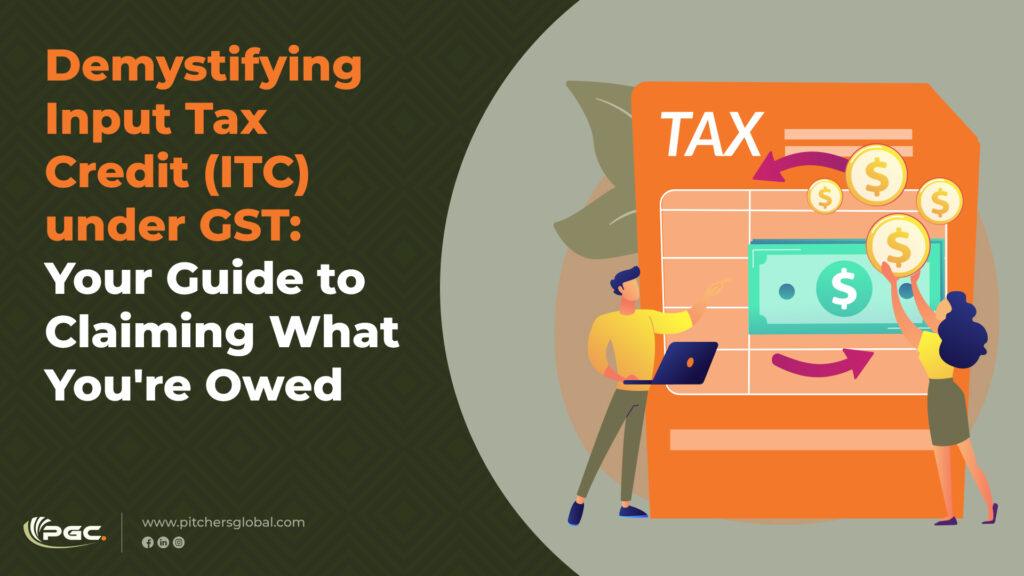Input Tax Credit (ITC) is a cornerstone of the Goods and Services Tax (GST) regime, designed to prevent the cascading effect of taxes. Essentially, it allows businesses to reduce the tax they pay on their output by the tax they have already paid on their inputs. But claiming ITC isn’t as simple as just paying tax; it requires adherence to specific rules and documentation.
If you’re looking to leverage ITC effectively, here’s what you need to know about the essential documents and special scenarios.

Demystifying Input Tax Credit (ITC) under GST
The Paperwork Power Play: Documents Required
To successfully claim ITC, you’ll need to maintain a precise paper trail. The following documents are your key to unlocking those credits:
- The Supplier’s Invoice: This is your primary document. Ensure it’s a valid GST-compliant invoice issued by your supplier for the goods or services you’ve received.
- GSTR-2B Reconciliation: In today’s GST landscape, the auto-drafted GSTR-2B statement is paramount. Your eligible ITC must clearly appear in this statement, acting as a crucial verification tool. Without its reflection here, claiming ITC can become challenging.
- Debit Note from Supplier: If, for any reason, the original invoice incorrectly stated a lower taxable value or tax payable, a debit note issued by your supplier is necessary to claim the additional ITC.
- Bill of Entry (for Imports): If you’re importing goods, the Bill of Entry is the definitive document for claiming ITC on the imported items.
- Alternative Valid Documents: In specific, prescribed situations, other documents can serve as proof for the claims. This includes a bill of supply (for amounts less than ₹200 or in scenarios where reverse charge mechanism applies) or an invoice/credit note issued by an Input Service Distributor (ISD).
- Supplier’s Bill of Supply: A bill of supply, issued by your supplier for goods and services in accordance with GST invoice rules, also qualifies as a valid document.
A Crucial Caveat: While maintaining all these documents as per GST invoice rules is vital, remember that you generally cannot claim ITC on tax paid due to demand orders arising from fraud, willful misstatement, or suppression of facts. Transparency and compliance are key!
Special Considerations: ITC for Banks and Financial Institutions
Banking companies and financial institutions operate under a unique set of rules when it comes to ITC, especially given their mix of taxable (including zero-rated) and exempted supplies. While the general rule dictates that ITC can only be claimed for inputs used in taxable supplies, these institutions have an interesting option.
They can either meticulously segregate their claim only what’s attributable to their taxable supplies, or they can choose to claim a flat 50% of their total available ITC each month, with the remaining 50% lapsing. This 50% option is often a more practical and beneficial choice, especially for institutions with complex operations involving extensive exempted services like loans and deposits. The details for this 50% ITC claim are to be furnished in Form GSTR-2.
Navigating Special Scenarios for ITC Claims
Life in business isn’t always linear, and GST provisions cater to various transitions and changes in tax status:
- Transitioning from Composition Scheme to Normal Taxpayer: If your business switches from the composition scheme to becoming a regular taxpayer under GST, you’re eligible to claim ITC. This credit can be claimed on inputs held in stock, semi-finished goods, finished goods in stock, and even on capital goods, as of the day immediately preceding your transition to a normal taxpayer.
- Exempt Supply Becomes Taxable: Should a good or service that was previously exempt become taxable, you can claim ITC on the inputs, semi-finished goods, finished goods, and capital goods that were used for that supply. An important point for capital goods here: the ITC amount must be reduced by 5% for every quarter (or part of a quarter) that has passed since the date of the invoice for the capital goods.
In these specific scenarios, the registered person must file Form GST ITC-01 on the common portal within 15 days of becoming eligible to claim. Furthermore, if the total ITC being claimed (across CGST, SGST, and IGST) exceeds ₹2 lakh, the details provided in Form GST ITC-01 require mandatory certification by either a practicing Chartered Accountant or a Cost Accountant.
Conclusion
Understanding and diligently managing Input Tax Credit is not just a compliance formality; it’s a critical component of financial health for any business operating under GST. By ensuring you have the correct documentation, understanding the nuances for specific sectors like banking, and knowing how to handle special circumstances, you can effectively reduce your tax burden and improve your cash flow. Staying informed and proactive in your claims is an essential step towards maximizing your financial efficiency in the GST era.
Get in touch with Pitchers Global to know more!
